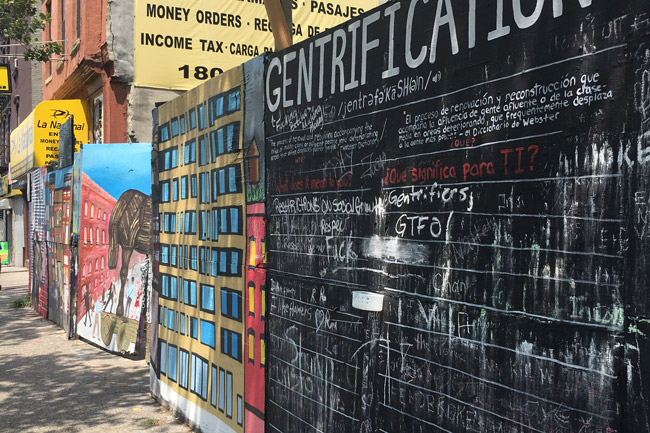by: Jessica Morris and Jenna Wandishin
On 07.21.17, AIANY’s Civic Leadership Program convened at the Center for Architecture for the first of five development sessions. The discussion focused on civic principles and how they impact the practices of architects and architect-citizens in New York City. The program participants were joined by four guests.
Jenna Brown, teacher of civics and geography from the Metro Boston area, advocated for the importance of civic involvement to create stronger communities. Randy Mason, Executive Director at PennPraxis in Philadelphia, shared a recent white paper he co-authored titled “Civic Infrastructure: A Model for Civic Asset Reinvestment.” Mason’s work provides a framework for organizing around—and leveraging—civic assets in existing communities. Emaleigh Doley, Commercial Corridor Manager for the Germantown United Community Development Corporation in Philadelphia, offered insight on the nuanced relationships that are required to operate within bureaucratic processes as a facilitator between government agencies, development entities, business owners, and communities. Doley’s perspective exposed critical points the program participants at the table to question and apply to their practices. The group, also joined by Ahmed Tigani, Assistant Director of Land Use, Planning and Development at the Manhattan Borough President’s Office, delved into the rezoning process in East Harlem. Tigani shared an overview of organizational dynamics from the perspective of the Borough President’s office and provided a basis for understanding the ongoing community engagement efforts in the neighborhood.
All agreed that increasing public trust towards those undertaking development, and overcoming challenges of scale that typically limit diversifying development contracts, could help to achieve greater equality and increase perceptions of common good. However, the group questioned where and how to bolster the ground work. Recognizing their own idealism as a potential challenge, the group acknowledged the prohibitive realities of community engagement.
In conversation, the group called out the different representational styles used in public documentation by city agencies and entities, but fell short of identifying opportunities for humanizing rapid change as it may occur at the neighborhood scale. The working group conceded that architects must continue to be active in these processes, but all struggled to find clear openings for intervening.
Two points to consider: Given the existing complexity of stakeholder dynamics, is it necessary to advocate for yet another voice at a seemingly dismissible or superfluous point in the process? Could these points of intervention, currently overlooked, be essential to perceptions of outcome and actually hold enormous, untapped civic value?
In recent decades, there has been an increasing interest is “acupuncture urbanism.” Perhaps an equally vital and possibly effective strategy would be to apply the tenets of architecture not as a sum-total delivery of service, but rather as strategic insertions of autonomous, informed, and applied perspectives. These applications would occur throughout our spatial interventions, which serve many and inform all about our prevailing attitudes towards the civic realm.
The Civic Leadership Program will continue to meet through this fall and plans to host several public programs on related topics at the Center for Architecture.








